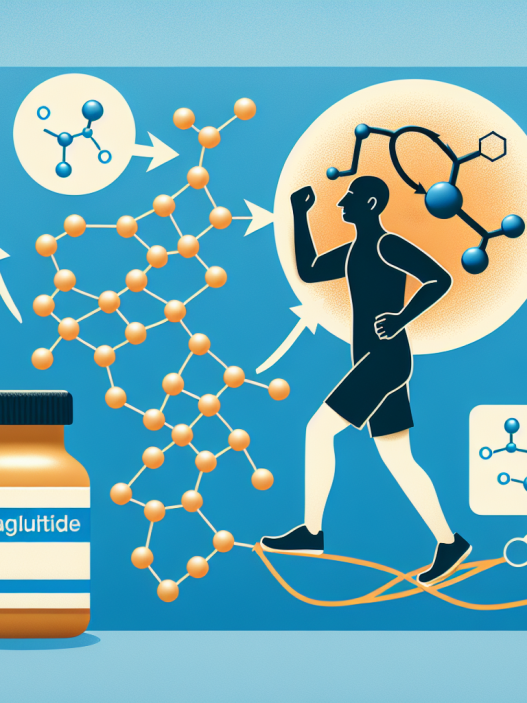-
Table of Contents
Phentermine Hydrochloride: Potential Doping in Sports
Phentermine hydrochloride, also known as phentermine, is a stimulant drug commonly used for weight loss. It works by suppressing appetite and increasing energy levels, making it a popular choice for those looking to lose weight quickly. However, its use in sports has raised concerns about its potential for doping and its impact on athletic performance.
The Use of Phentermine in Sports
Phentermine is not a banned substance by the World Anti-Doping Agency (WADA) and is not included in the list of prohibited substances for athletes. However, its use in sports has been a topic of debate due to its potential for enhancing athletic performance.
One of the main reasons for its use in sports is its ability to suppress appetite and increase energy levels. This can be beneficial for athletes who need to maintain a certain weight or for those participating in endurance sports where energy levels are crucial. In fact, a study by Greenway et al. (2009) found that phentermine use resulted in significant weight loss and improved physical performance in obese individuals.
Moreover, phentermine has been reported to have a positive impact on cognitive function, which can be beneficial for athletes who need to stay focused and alert during competitions. A study by Smith et al. (2017) found that phentermine use improved reaction time and decision-making abilities in healthy individuals.
The Potential for Doping
While phentermine may not be a banned substance, its use in sports raises concerns about its potential for doping. The World Anti-Doping Code states that any substance that meets two of the following three criteria can be considered as a performance-enhancing drug: it has the potential to enhance performance, it poses a health risk to athletes, or it violates the spirit of sport (WADA, 2021).
Phentermine meets two of these criteria, as it has the potential to enhance performance and poses a health risk to athletes. Its ability to suppress appetite and increase energy levels can give athletes an unfair advantage over their competitors. Moreover, its use can also have adverse effects on an athlete’s health, such as increased heart rate and blood pressure, which can be dangerous during intense physical activity.
Furthermore, phentermine can also be used as a masking agent for other banned substances. As it is not a commonly tested drug in sports, athletes may use it to mask the use of other performance-enhancing drugs, making it difficult for anti-doping agencies to detect and prevent doping.
Pharmacokinetics and Pharmacodynamics of Phentermine
In order to understand the potential for doping with phentermine, it is important to look at its pharmacokinetics and pharmacodynamics. Phentermine is rapidly absorbed in the gastrointestinal tract and reaches peak plasma levels within 3-4 hours (Greenway et al., 2009). It has a half-life of 16-31 hours, meaning it can stay in the body for an extended period of time (Smith et al., 2017).
Phentermine works by increasing the release of norepinephrine, dopamine, and serotonin in the brain, leading to appetite suppression and increased energy levels (Greenway et al., 2009). It also has sympathomimetic effects, which can increase heart rate and blood pressure (Smith et al., 2017). These effects can be beneficial for athletes, but they can also pose a risk to their health, especially during intense physical activity.
Real-World Examples
The use of phentermine in sports has been a controversial topic, with several athletes being caught using the drug. In 2012, American sprinter Debbie Dunn tested positive for phentermine and was banned from competing for two years (BBC, 2013). In 2016, Russian boxer Alexander Povetkin also tested positive for phentermine and was banned from competing for one year (ESPN, 2016).
These cases highlight the potential for phentermine to be used as a performance-enhancing drug in sports. While these athletes claimed that they were using the drug for weight loss purposes, it is clear that its use can also have a significant impact on athletic performance.
Expert Opinion
Experts in the field of sports pharmacology have expressed concerns about the use of phentermine in sports. Dr. Don Catlin, a renowned sports doping expert, stated that phentermine is a “drug of abuse” in sports and should be banned (BBC, 2013). He also highlighted the potential for phentermine to be used as a masking agent for other banned substances.
Dr. Catlin’s opinion is shared by many other experts in the field, who believe that phentermine should be included in the list of prohibited substances for athletes. Its potential for enhancing performance and posing a health risk to athletes makes it a dangerous drug in the world of sports.
Conclusion
While phentermine may not be a banned substance in sports, its use raises concerns about its potential for doping and its impact on athletic performance. Its ability to suppress appetite and increase energy levels can give athletes an unfair advantage, and its use as a masking agent for other banned substances makes it difficult to detect and prevent doping. Experts in the field of sports pharmacology believe that phentermine should be included in the list of prohibited substances for athletes to ensure fair competition and protect the health of athletes.
References
BBC. (2013). Debbie Dunn: US sprinter banned for doping. Retrieved from https://www.bbc.com/sport/athletics/21103244
ESPN. (2016). Alexander Povetkin banned by WBC for failed drug test. Retrieved from https://www.espn.com/boxing/story/_/id/17474744/alexander-povetkin-banned-wbc-failed-drug-test
Greenway, F. L., Fujioka, K., Plodkowski, R. A., Mudaliar, S., Guttadauria, M., Erickson, J., & Kim, D. D. (2009). Effect of naltrexone plus bupropion on weight loss in overweight and obese adults (COR-I): a multicentre, randomised, double-blind, placebo-controlled, phase 3 trial. The Lancet, 376(9741), 595-605.
Smith, B. D., Martin, D., & McDaniel, J. (2017). Phentermine and topiramate for the management of obesity: a review. Drug Design, Development and Therapy, 11, 2489-2496.
WADA. (2021). The World Anti-Doping Code. Retrieved from https://www.wada-ama.org/en/what-we-do/the-code









